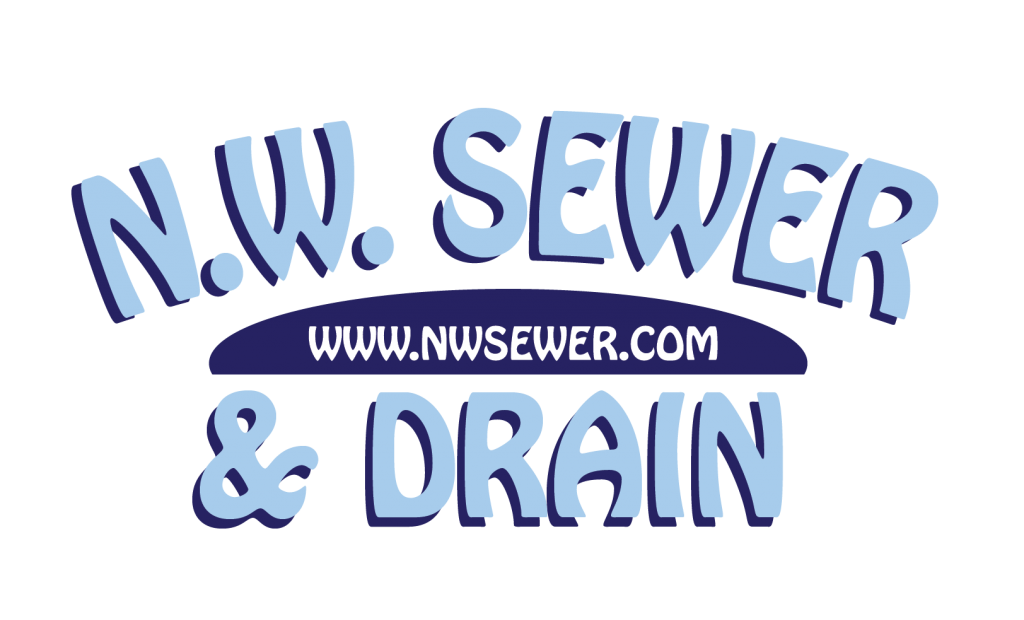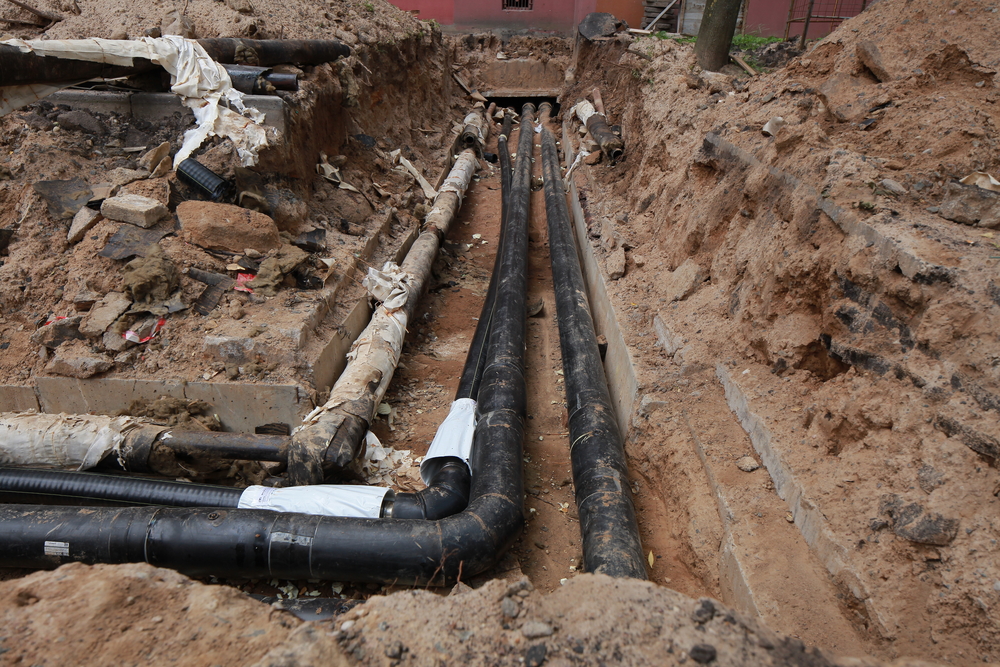A belly (or sag) in your sewer line is an issue that needs to be corrected immediately. Sewer line bellies are pretty much a common issue and can be a real headache for homeowners. Bellies occur in sewer lines when the sewer pipes are not properly installed. A belly may also be as a result of environmental factors, such as pressure from root encroachment on the sewer lines.
In this article, you’ll learn what a sewer line belly is, the causes of sewer line bellies, other related sewer line issues, and how to fix bellies in your home’s sewer line.
What is a Belly in Sewer Line?
In ideal circumstances, a sewer line should slope downward at the correct angle (also known as pitch), away from the home. But when a belly (or sag) occurs in the sewer, it changes the slope of the pipe. A portion of the pipe falls downward, disrupting the linear flow of wastewater in the sewer system and allowing wastewater and other debris to accumulate in the pipe.
Eventually, this leads to standing water and sediment collecting inside the sewer line (within the belly or sag), which over time, can lead to erosion, blockage, and ultimately, a sewer line back up into the home. This situation results from the negative slope created by the belly in the sewer line. So the pipe continues to hold wastewater in the belly even after the flow of water has stopped. Another thing to keep in mind is that a belly typically occurs at the fitting of the pipe, i.e., where two pipes are connected.
Sewer line bellies can become a major concern in any home because of the very high chance of a blockage occurring, which results in the collection of debris and backups in the sewer line. Unless this situation is identified and adequately addressed in time, it can quickly become a major problem in any home. In the worst cases, it can cost homeowners thousands of dollars in managing the damage from wastewater flooding.
Causes: Why Your Sewer Line is Bellied
In most cases, sewer line bellies are caused by geological events or environmental factors, such as soil erosion, foundation settlement, earthquakes, extreme temperature fluctuations, sun, heat, rain, or root intrusions. It can also result from erroneous pipe installations or poor soil compaction. Inadequate planning and poor installation are part of the root causes of bellies occurring in your sewer line.
Remember that a belly typically occurs at the fitting of the pipe, where two pipes are connected. This means that installations done with inferior materials might bulge under pressure, leading to a sewer belly in the pipe. As a way to check this situation, quality materials like cast iron can be used to ensure that sewer pipes will not bend when exposed to extreme pressure.
Sewer and drain specialists experienced in sewer line installations know the best materials for the job and they understand proper bedding compaction, high-quality pipe materials, and other essential factors, such as the correct angle of slope to help prevent the occurrence of sewer line bellies. In other cases, the unstable ground can cause bellies. Even if the sewer line has been installed with the appropriate support, it may still sag if the earth below it begins to shift.
Preventing Sewer Line Bellies
To prevent sewer line bellies, proper soil bedding must be done during installation. This includes using large format gravel and sand because if the wrong materials are used for embedding, certain sections of the pipe will settle further into the ground over time, resulting in bellies.
The installer must also ensure that your sewer line has the correct slope and grade to allow gravity to transport waste away from the building. By using advanced trenchless sewer line installation tools like video cameras and locator wands, professionals can ensure proper sewer line slope, which saves you from the trouble of bellies and the subsequent buildup of debris and blockage in your sewer line.
How Can You Detect a Sewer Line Belly?
Advanced video inspection technology is required to diagnose a sewer pipe belly. A professional sewer camera inspection includes inserting a special video camera attached to a cable through the pipe, which provides a close-up view of the entire sewer lateral and allows your plumber to identify the issue. Incorrect slope issues can also be detected with a sewer line camera inspection.
How to Fix a Belly in Sewer Line
With the aid of a sewer camera inspection, the sewer and drain specialist can visualize the bellies in your sewer line. This inspection will also show whether there is any belly in the first place. The bad news is that if there is actually a belly in your sewer line, one option to fix the issue is to dig out the pipe and replace it. This means that the process requires excavation and replacement, which can be quite costly.
Excavation is the only effective way to get at the problem and correct the slope of the pipe. If this isn’t done, the pipe will continue to cause larger issues as it collects more water and debris in the belly.
Another option is trenches pipe replacement, but this can be a bit tricky to achieve. It will require the input of sewer and drain experts that are experienced in trenchless pipe replacement techniques. However, it’s important to note that this procedure may not apply to all situations.
Additional Considerations for Sewer Line Bellies: Maintenance and Repair Options
Early Signs and Prevention
Detecting the early signs of a sewer line belly can save you from extensive repairs down the road. Besides water backups, another early sign of a sewer line belly is a sudden change in drainage speed. If you notice water moving more slowly through your pipes or experience frequent clogs, it may be a result of a developing sag. Regular inspections and being proactive about addressing these early symptoms can prevent larger issues and costly repairs.
Routine Maintenance for Longevity
Routine maintenance can keep sewer lines in good condition, reducing the likelihood of developing a belly. For instance, periodic cleaning and hydro-jetting can remove debris buildup before it causes blockages. In addition, trimming any tree roots near sewer lines can help prevent root intrusion, which is a common cause of sewer pipe sagging.
Relining as a Repair Option
In cases where the belly is minor, trenchless sewer repair, such as pipe relining, may be a viable solution. Relining involves inserting a flexible, epoxy-saturated liner into the pipe, which hardens to create a new, smooth surface within the pipe. This method can eliminate the sagging section by adding a more rigid layer inside the sewer line, although it might not be suitable for severely bellied pipes. Consulting with an experienced sewer specialist will help determine whether this approach could work for your sewer line.
Advanced Diagnostics and Accurate Detection
If you’re uncertain about the state of your sewer line or suspect there may be a sag, investing in a professional camera inspection is the best way to get clarity. Advanced diagnostics allow specialists to locate the exact depth and length of the belly, so they can recommend the most effective solution. The camera inspection also helps determine whether other issues, such as cracks or root intrusions, are contributing to the sag.
Excavation-Free Alternatives
Some modern sewer repair techniques focus on reducing the need for excavation. For example, pipe bursting is a method where the existing pipe is broken apart while simultaneously installing a new pipe in its place. This technique is minimally invasive and can be an option for certain types of pipe sags, depending on the layout of the sewer line and the extent of the damage.
Partner with Trusted Professionals
Managing sewer line bellies requires expert assessment and specialized equipment. At N.W. Sewer & Drain, our team is equipped to handle all aspects of sewer line inspection, diagnosis, and repair, using the latest technology and years of industry experience. If you’re experiencing drainage issues or suspect a belly in your sewer line, reach out to us for a comprehensive evaluation and effective solutions.
Get Professional Help for Sewer Line Bellies
The best way to ensure accurate detection and fixing of the rectification of bellies in your building’s sewer line is to work with a professional sewer and drain specialist.

At N.W Sewer and Drain, we are a team of trusted sewer specialists with over 20 years of experience in handling all kinds of sewer line-related issues in Seattle and surrounding areas, including Bellevue, Everett, and Shoreline.. Feel free to reach out to us today at 206-931-7728 to schedule an inspection of your sewer line and pipes.



